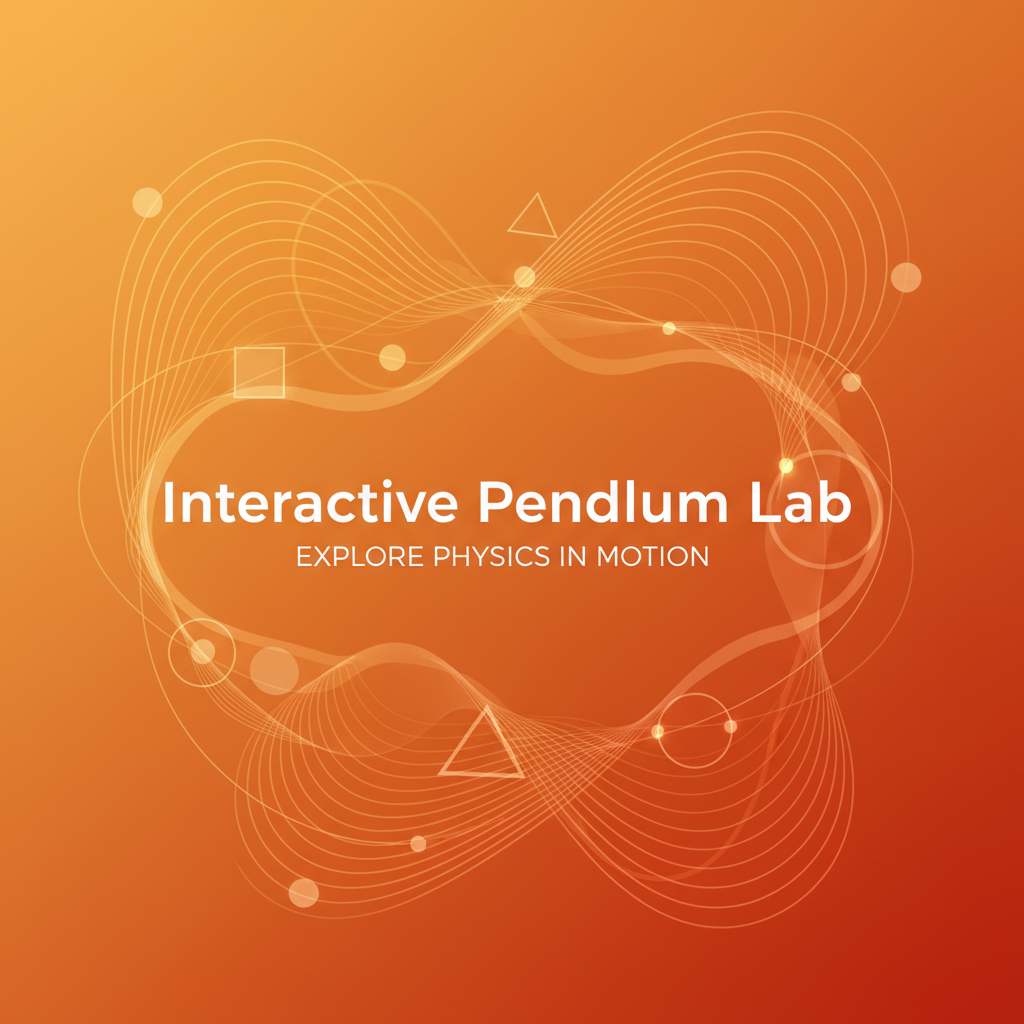
Interactive Pendulum Lab
A virtual physics laboratory for studying the motion of a simple pendulum. This client-side tool lets you control variables like pendulum length, gravity, and friction (damping) to see how they affect the period and motion. A key feature is the real-time energy chart that visually demonstrates the principle of conservation of energy as it converts between kinetic and potential forms. It's a perfect tool for students learning about oscillations and simple harmonic motion.
Professional Physics Laboratory
Advanced pendulum simulation with multiple visualization modes and precise controls
Simulation
Parameters
Display
Solver
Current State
About This Tool
An interactive physics simulation of a simple pendulum. Adjust length, gravity, and friction to study simple harmonic motion and the conservation of energy.
Advanced Features
- • Multiple Solvers: Runge-Kutta, Euler, and Verlet integration methods
- • Driven Oscillations: Add external forcing with adjustable amplitude and frequency
- • Phase Space Analysis: Visualize the pendulum's state in phase space
- • Real-time Plotting: Track angle, velocity, and energy over time
- • Variable Parameters: Adjust length, gravity, damping, and mass dynamically
- • Professional Accuracy: High-precision numerical integration for research-quality results
Exploring the Simple Pendulum
A simple pendulum is a classic physics model consisting of a mass (or "bob") suspended from a pivot by a massless string or rod. When displaced from its equilibrium position, it swings back and forth under the influence of gravity. This interactive lab allows you to explore the principles of simple harmonic motion, energy conservation, and the factors that influence a pendulum's period.
How to Use the Pendulum Lab
- Set Initial Conditions: Drag the pendulum bob to set its starting angle. Release the mouse to let it swing.
- Adjust Parameters: Use the sliders to change the pendulum's length, mass, the force of gravity, and the amount of damping (air resistance).
- Analyze the Motion: Use the different tabs to visualize the pendulum's motion. The "Phase Space" tab shows the relationship between angle and angular velocity, while the "Time Graphs" tab plots these values over time. The "Energy Analysis" tab shows how the potential and kinetic energy of the system change.
Frequently Asked Questions (FAQ)
- What is a Runge-Kutta solver?
-
The Runge-Kutta method is a numerical technique for solving differential equations, like the one that governs the motion of a pendulum. It is more accurate than the simpler Euler method, especially for larger time steps.
- Why doesn't the mass affect the period of the pendulum?
-
For a simple pendulum, the period is determined only by its length and the acceleration due to gravity (T = 2π√(L/g)). The mass cancels out of the equation of motion, a principle first discovered by Galileo.
Expand your expertise
Recommended deep dives and guides matched to Interactive Pendulum Lab.